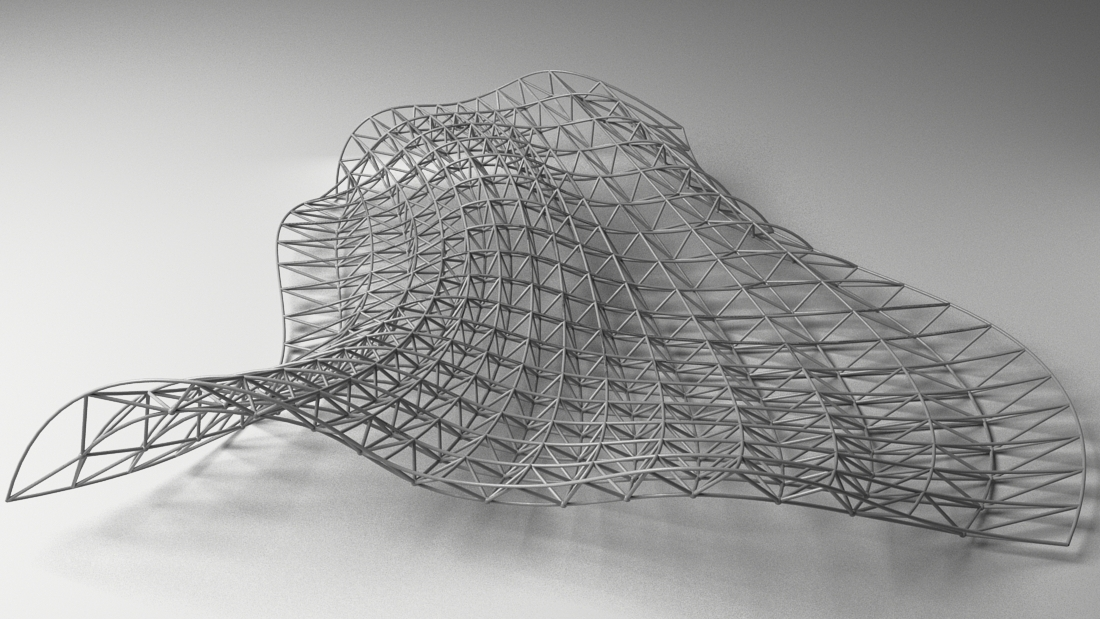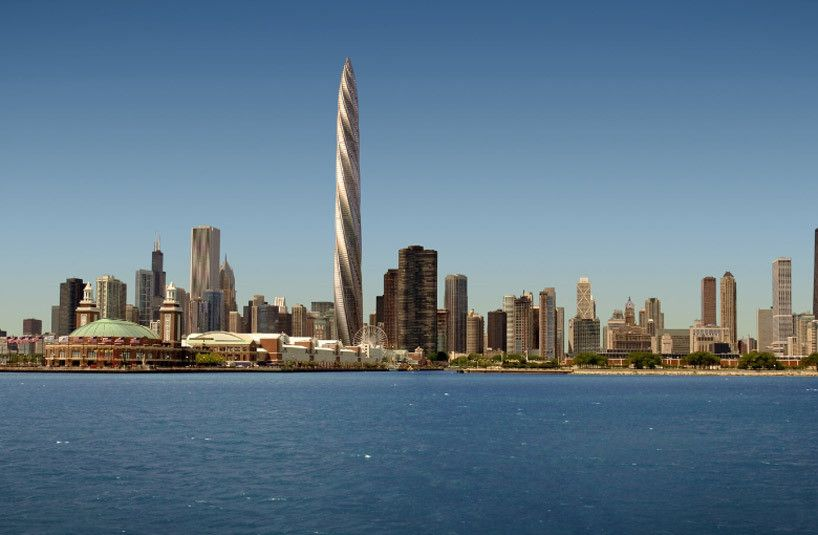How Rhino Grasshopper is used in Parametric Designs & Modelling
Table of Contents
Whether you are an architect or a designer, whenever the word Parametric Modeling comes, it automatically indicates Grasshopper 3D. Among the recent advancements in software, Rhino Grasshopper emerges as one of the crucial pieces for transforming the approach to parametric designs and modelling. These two tools combine the powerful features of Rhino with the dynamic and algorithm-driven features of Grasshopper, allowing designers to explore, create, and alter complex structures with ease.
Read the blog to understand how you can do parametric architecture with Grasshopper, providing the details of its features, applications, and impact.
Understanding Parametric Design
Parametric design is a method in which architectures use algorithms and computational thinking to generate complex structures and forms. This allows designers to fix a set of parameters or variables, which the algorithm uses to create a unique design solution. Unlike traditional design methods, where consistent changes and adjustments are required, parametric design allows real-time modifications and changes by altering the input values within the algorithm in the model.
Designers and architects can quickly explore multiple forms and structures, crucial in architecture and industrial design methods. It enables seamless collaboration and communication among all stakeholders. For an in-depth and practical experience, you can try parametric architecture with Grasshopper!
Understanding Rhino Grasshopper
Rhino Grasshopper has changed the future of modelling and designing. It is a groundbreaking visual programming tool integrated within Rhinoceros 3D (Rhino), a leading computer-aided design (CAD) software. Grasshopper has transformed the world of architectural design by introducing a highly intuitive, node-based editing environment that allows users to create complex parametric structures without the need to write traditional parameters. This innovative approach to design and modelling has made Grasshopper a pivotal tool for architects, designers, and engineers seeking to explore the depths of parametric design. Grasshopper automates the changes by setting a few rules and parameters, freeing designers and architects from manual tasks.
Also Check out: Everything You Need to Know About Rhino 3D
Key Features of Rhino Grasshopper
Rhino Grasshopper is a cutting-edge software that brings algorithmic modelling to the fingertips of architects and engineers. Here are the top features of Rhino Grasshopper:
- Visual Programming: Grasshopper utilises a visual programming interface, eliminating the need for traditional coding. This approach allows users to create complex parametric design algorithms through a user-friendly drag-and-drop system.
- Parametric Modeling: It allows designers to create flexible, complex, and adjustable models by letting them define the parameters, such as parametric benches or facades. This allows for rapid exploration of design alternatives and optimisation of solutions at the maximum level.
- Real-time Feedback: Grasshopper offers real-time feedback, allowing architects, engineers, and other stakeholders to see the immediate changes to the designs and structure, which is essential for effective communication and collaboration.
Applications of Rhino Grasshopper in Parametric Design
Many professionals use Rhino Grasshopper because of its dynamic features. Here is an in-depth look at how Rhino Grasshopper is used in the below-mentioned fields:
1. Architecture
In the architectural field, Parametric architecture Grasshopper applications enable architects to explore various organic forms and non-linear geometries that respond to environmental, social, and material aspects. Architects can generate aesthetic and highly functional designs by adding variables related to different site conditions, material properties, and other requirements.
Also Checkout: Why Architectural Designers Should Master Grasshopper + Dynamo?
2. Engineering
Engineers leverage Grasshopper for structural optimisation, creating designs that maximise strength while minimising material use. It is valuable in constructing large-span structures and intricate frameworks, where material efficiency and structural integrity are paramount. It also facilitates the integration of various platforms into the systems, ensuring seamless functionality and efficiency.
3. Product Design
The product designers use Rhino Grasshopper to create parametric furniture and products that can be easily adjusted to meet specific user needs or manufacturing constraints. You can test and refine ideas on a real-time basis using Rhino Grasshopper.
4. Fashion and Textile Design
In the fashion and textile industry, Grasshopper is breaking new ground by enabling the creation of patterns and structures that adapt to the human form in innovative ways. Designers use Grasshopper to experiment with novel materials and fabrication techniques, creating garments that are not only visually striking but also functionally superior.
5. Urban Planning and Landscape Design
Rhino Grasshopper extends its influence to urban planning and landscape design, where its ability to manage and manipulate large data sets proves invaluable. Designers can model entire urban districts or natural landscapes, simulating various scenarios to optimise spatial layouts, green spaces, and infrastructure networks.
Benefits of Using Rhino Grasshopper in Parametric Design
Using Rhino Grasshopper for parametric design and modelling has opened multiple doors for creativity and efficiency, especially for the architecture and design field. Here are the key benefits of using Rhino Grasshopper in Parametric Design:
1. Increased Efficiency and Productivity
Grasshopper automates repetitive and complex tasks, significantly speeding up the design process. This automation extends to generating detailed design variations, enabling rapid prototyping and exploring alternatives. The time saved allows designers to focus more on creative aspects and less on manual modelling tasks, boosting overall productivity.
2. Real-time Feedback for Better Collaboration
It is one of Rhino Grasshopper's core features. Designers can see the effects of parameter adjustments in real-time, facilitating a highly iterative design process. This immediate visual feedback is valuable in parametric facades where subtle changes can significantly impact aesthetics and performance.
3. Enhanced Design Flexibility
Architects and designers can easily change and adjust complex models by employing parametric design in Grasshopper by changing input parameters. This adaptability extends to various project types, including parametric architecture with Grasshopper, where the ability to tweak and refine design elements leads to more innovative and responsive design solutions.
Also Check out: Rhino 3D v/s Fusion 360: Which Software Should You Learn
Case Studies
Rhino Grasshopper is a 3D modelling software, which has been used in numerous projects across various fields, including architecture, industrial design, and art. Here are the top fascinating projects created using Rhino 3D:
1. The Beijing National Stadium (Bird's Nest)
The Beijing National Stadium, known as the Bird's Nest due to its intricate lattice structure resembling a bird's nest, stands as an architectural marvel and symbol of modern China. It is designed by the Swiss architecture firm Herzog & de Meuron, in collaboration with Chinese artist Ai Weiwei and the China Architecture Design & Research Group. This iconic stadium was constructed for the 2008 Summer Olympics held in Beijing.
Spanning over 258,000 square metres and with a seating capacity of approximately 80,000, the stadium's design was inspired by Chinese ceramics, embodying a blend of traditional aesthetics and cutting-edge technology. The outer shell comprises a web of steel beams that create a visually stunning, semi-transparent envelope, allowing natural light and air to permeate the interior spaces. This feature significantly enhances the stadium's sustainability and spectator experience. Rhino 3D played a critical role in the stadium's design process, particularly in modelling the complex geometry of the stadium's outer shell.
2. The Twist Museum, Norway (H3) 
The Twist Museum, located in Jevnaker, Norway, near Oslo, is a remarkable feat of contemporary architecture that seamlessly blends art, nature, and architecture into a singular, cohesive experience. Designed by the Danish architecture firm BIG - Bjarke Ingels Group and completed in 2019, The Twist serves as both a bridge and a museum, spanning the Randselva River in the Kistefos Sculpture Park.
This innovative structure is part of an expansion of the sculpture park, which aims to unite the park's two sides with a new gallery space while offering a dynamic twist that adds a sculptural and experiential dimension to the landscape. Rhino Grasshopper was used to find the architectural challenges posed by The Twist's unique design. The software enabled the architects to model the twisting geometry and iterate on the design accurately.
Also Check out: Top 6 Parametric Modelling Software for Architects and Designers to Learn
3. The Chicago Spire Pavilion
The Chicago Spire Pavilion is a fascinating exploration of architectural potential and innovation. The project was conceived as part of a broader development plan for the Chicago Spire, a proposed supertall skyscraper in Chicago that was never constructed. Despite the skyscraper's fate, the pavilion's design offers insight into the possibilities of using architecture to create engaging and dynamic public spaces.
The pavilion aimed to serve as a multifunctional space that could accommodate a range of activities, from exhibitions and events to leisure and recreation. The design philosophy behind the pavilion was to create a structure that was not only aesthetically pleasing but also versatile and adaptive to the community's needs. Rhino 3D's modelling capabilities were essential in conceptualising and developing the pavilion's design. The software facilitated the creation of the pavilion's spiralling structure, allowing for the exploration of tension and form in a way that traditional modelling methods could not achieve.
How to Learn Rhino Grasshopper for Parametric Design?
In today’s world, aspiring architects and engineers must know parametric design and software that can be used. To upskill in parametric design, apply for the Master Computational Design Course by Novatr.
Duration: 10 months
This Master Computational Design Course is designed to equip students with advanced skills in computational techniques in the design process. This combines the fundamental principles of design, architecture, engineering, and computer science, focusing on using computational methods to solve complex design problems, create innovative solutions, and explore new frontiers in design and architecture.
Essential Components of the Course
Master Computational Design Course by Novatr is an extensive course, which will teach you everything from architectural design to proficiency in using tools and software. Here are the key components of the course:
- Computational Thinking and Design Processes: Students will learn computational skills in design, enabling them to approach design problems systematically and creatively. This involves understanding algorithms, data structures, and the logical organisation of data.
- Software and Tools Proficiency: A significant part of the course is mastering software and tools essential for computational design. This includes Rhino Grasshopper, a leading platform for parametric design, along with other tools like Dynamo, Rhino, and more.
- Data-Driven Design and Sustainability: The course may cover how to use data to make informed decisions, optimising factors such as environmental sustainability, material efficiency, and user comfort. This often involves simulation and analysis tools integrated into the computational design workflow.
- Advanced Topics and Practical Learning: Advanced topics might include machine learning in design, interactive design, and the application of Computational Design in urban planning and landscape architecture. Students learn to apply their skills in real-world scenarios, working on projects that may have tangible outcomes or exploratory research components.
Conclusion
Rhino Grasshopper in parametric design offers numerous benefits. It is one of the crucial tools in the architecture field that has unparalleled flexibility and power to explore complex geometries and innovative solutions. To explore the potential of computational design you can reach out to Novatr, and apply for our Master Computational Design Course. We prepare aspiring architects for a future where technology and design come together in exciting and innovative ways.
For more details, you can also check out our Resource Page!

 Thanks for connecting!
Thanks for connecting!


.png)





.jpg)

